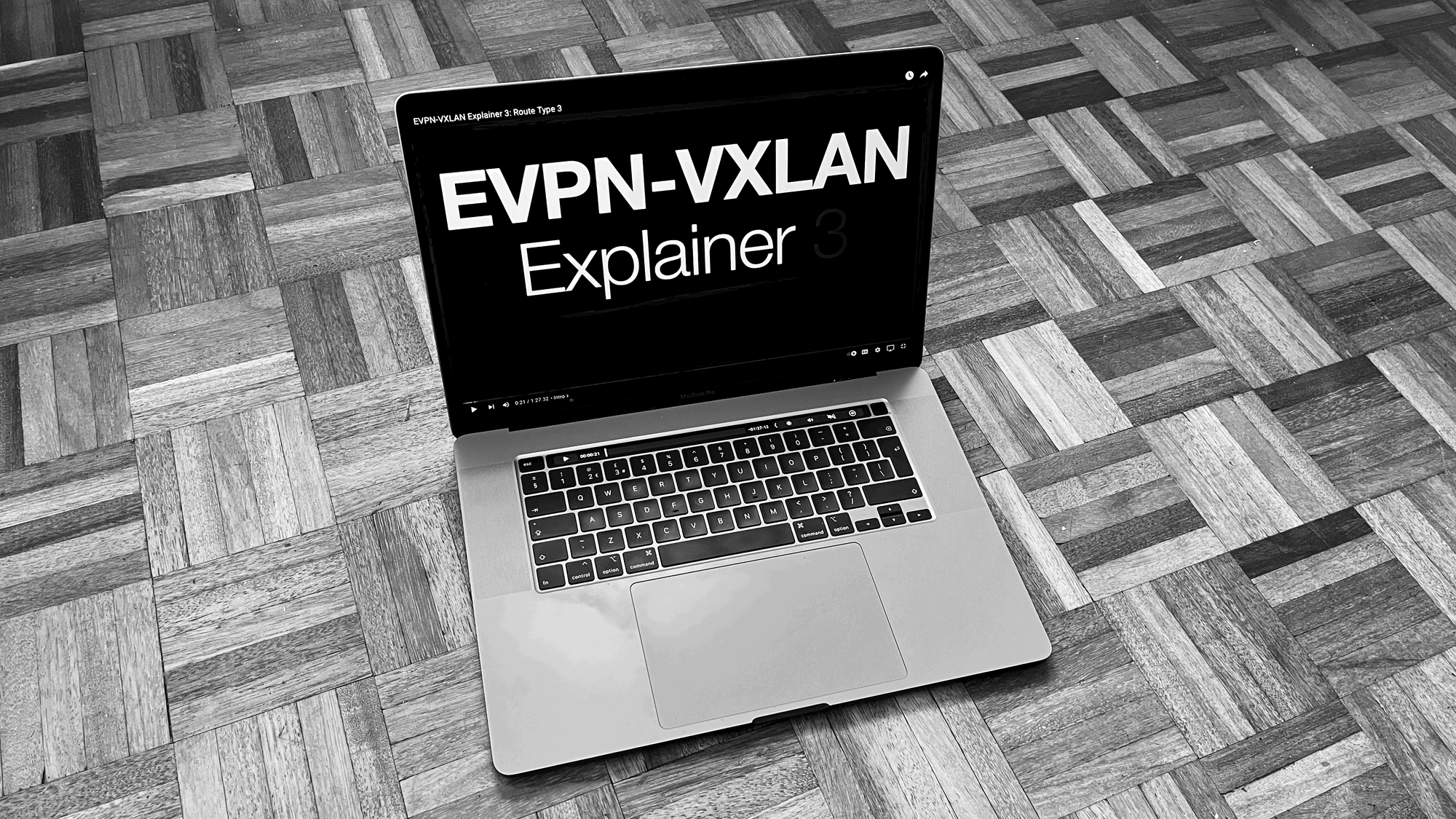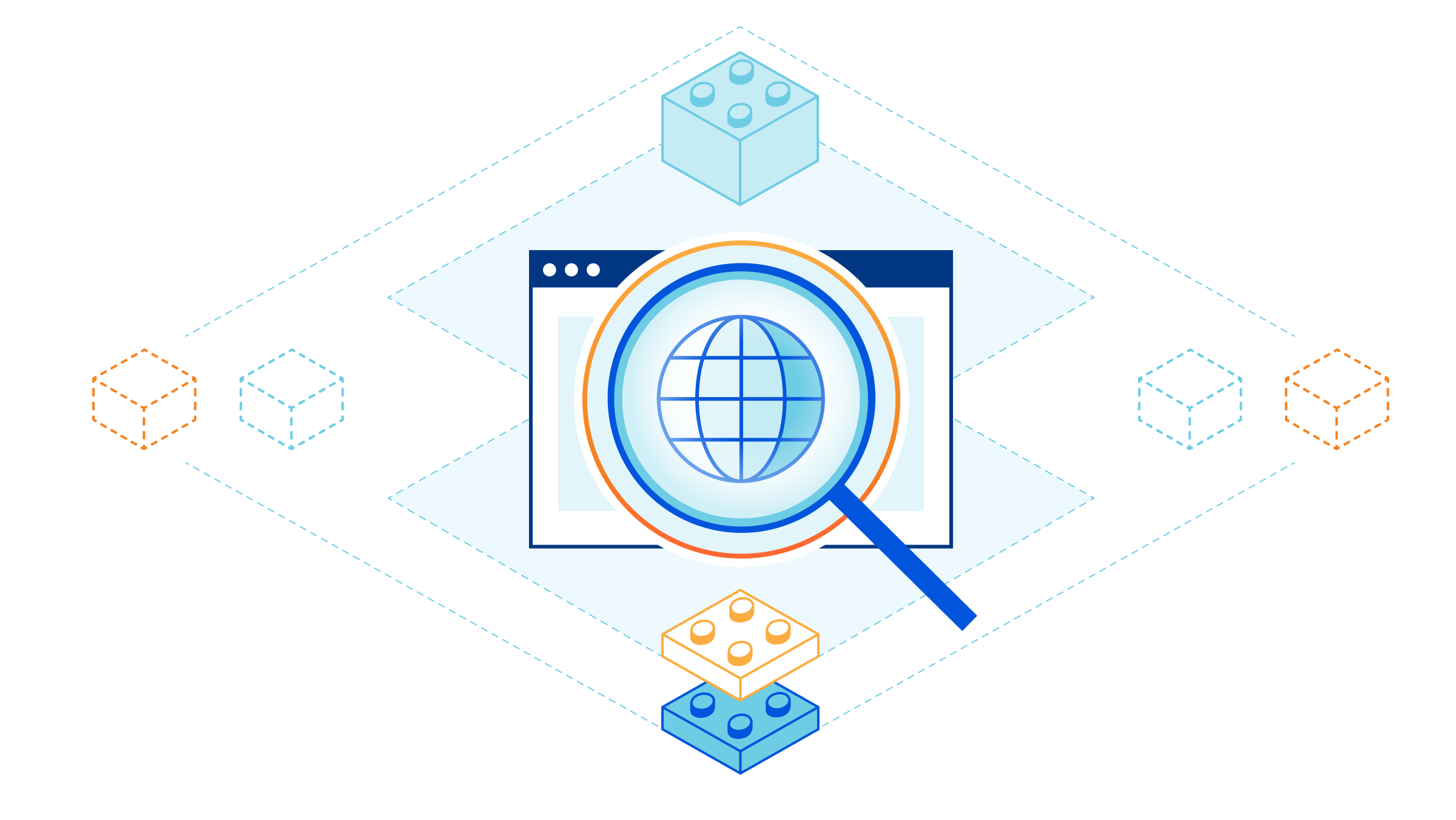Video: Getting Started with netlab
After explaining how netlab fits into the virtual lab orchestration picture and what exactly it can do, let’s focus on what’s the easiest way to get started.
The next video in the Using netlab to Build Networking Labs series describes:
- Typical deployment scenarios: VirtualBox on Windows or MacOS, or libvirt/KVM on a Linux server or a virtual machine (running on Windows or MacOS).
- Hardware and software requirements
- Behind-the-scene operations performed by netlab create, netlab initial and netlab up commands.
Video: Getting Started with netlab
After explaining how netlab fits into the virtual lab orchestration picture and what exactly it can do, let’s focus on what’s the easiest way to get started.
The next video in the Using netlab to Build Networking Labs series describes:
- Typical deployment scenarios: VirtualBox on Windows or MacOS, or libvirt/KVM on a Linux server or a virtual machine (running on Windows or MacOS).
- Hardware and software requirements
- Behind-the-scene operations performed by netlab create, netlab initial and netlab up commands.
Introducing New Networking and Advanced Security Capabilities in NSX 4.1
We’re delighted to announce the general availability of VMware NSX 4.1, a release that delivers new functionalities for virtualized networking and advanced security for private, hybrid, and multi-clouds. This release’s new features and capabilities will enable VMware NSX customers to take advantage of enhanced networking and advanced security, increased operational efficiency and flexibility, and simplified troubleshooting.
Read on to discover the key features in the latest NSX release.
Stay Ahead of Threats and Safeguard our Network
Uncover Every Threat
NSX 4.1 introduces a new feature that allows the sending of IDS/IPS logs from the NSX Gateway firewall (GFW) to our Network Detection and Response (NDR), which is part of VMware NSX Advanced Threat Prevention (ATP). This new functionality is complementary to our existing NSX Distributed Firewall (DFW), which has had IDS/IPS logs sent to the NDR for quite some time now. With this new feature, NSX 4.1 customers can gain a more comprehensive view of network activity, allowing faster and more effective responses to threats. By analyzing IDS/IPS logs from GFW and DFW in combination with our Network Traffic Analysis (NTA) and Sandboxing, our NDR system can correlate events and identify attack patterns, providing a complete picture Continue reading
Learning EVPN? Don’t skip Route Type 3
In this post

📚 The trouble with learning RT-3s.
🎥 EVPN-VXLAN Explainer 3 is finally out!
👹 An odd choice?
After many hours of writing, recording, re-recording, and rewriting; I was finally able to release the third video in my EVPN-VXLAN Explainer series (link below). This video deals with one of the aspects of EVPN that took me a while to grasp, but is fundamental to unlocking this protocol; that being Route Type 3.
After my initial decision to tackle RT-3 as the first Route Type that I cover for this series, I started to wonder whether this may seem like an odd choice. RT-2 being the update that most are interested in, thats your actual host update.
However, the more I progressed with the video writing process, the more natural it felt to tackle RT-3s first.
After all, this is the first update that you'll see in the EVPN table or your wireshark capture, with or without end hosts.
RT-3s are fundamental to the operation of EVPN networks, no Route Type 3s, no flooding; and without that, IP networks do not run so well.
But as fundamental as RT-3s are, they do seem to be a little over-looked in Continue reading
Why, Where, and When is There a Market for 5G NR RedCap?
Until recently, 5G was focused on super high-speed networks. Now an effort has begun to expand it deep into IoT networks. Here's what IT planners need to know.Oxy is Cloudflare’s Rust-based next generation proxy framework


In this blog post, we are proud to introduce Oxy - our modern proxy framework, developed using the Rust programming language. Oxy is a foundation of several Cloudflare projects, including the Zero Trust Gateway, the iCloud Private Relay second hop proxy, and the internal egress routing service.
Oxy leverages our years of experience building high-load proxies to implement the latest communication protocols, enabling us to effortlessly build sophisticated services that can accommodate massive amounts of daily traffic.
We will be exploring Oxy in greater detail in upcoming technical blog posts, providing a comprehensive and in-depth look at its capabilities and potential applications. For now, let us embark on this journey and discover what Oxy is and how we built it.
What Oxy does
We refer to Oxy as our "next-generation proxy framework". But what do we really mean by “proxy framework”? Picture a server (like NGINX, that reader might be familiar with) that can proxy traffic with an array of protocols, including various predefined common traffic flow scenarios that enable you to route traffic to specific destinations or even egress with a different protocol than the one used for ingress. This server can be configured in many ways Continue reading
Kubernetes Unpacked 020: A Working Definition Of Kubernetes At The Edge
The edge is one of those terms that can be shaped to fit almost any use case. On today's Kubernetes Unpacked episode, host Michael Levan talks with Alan Hohn, Director of Software Strategy at Lockheed Martin, about what the defense industry means by the edge, and getting a working definition of the edge we can all live with.
The post Kubernetes Unpacked 020: A Working Definition Of Kubernetes At The Edge appeared first on Packet Pushers.
Kubernetes Unpacked 020: A Working Definition Of Kubernetes At The Edge
The edge is one of those terms that can be shaped to fit almost any use case. On today's Kubernetes Unpacked episode, host Michael Levan talks with Alan Hohn, Director of Software Strategy at Lockheed Martin, about what the defense industry means by the edge, and getting a working definition of the edge we can all live with.How we built an open-source SEO tool using Workers, D1, and Queues


Building applications on Cloudflare Workers has always been fun. Workers applications have low latency response times by default, and easy developer ergonomics thanks to Wrangler. It's no surprise that for years now, developers have been going from idea to production with Workers in just a few minutes.
Internally, we're no different. When a member of our team has a project idea, we often reach for Workers first, and not just for the MVP stage, but in production, too. Workers have been a secret ingredient to Cloudflare’s innovation for some time now, allowing us to build products like Access, Stream and Workers KV. Even better, when we have new ideas and we can use new Cloudflare products to build them, it's a great way to give feedback on those products.
We've discussed this in the past on the Cloudflare blog - in May last year, I wrote how we rebuilt Cloudflare's developer documentation using many of the tools that had recently been released in the Workers ecosystem: Cloudflare Pages for hosting, and Bulk Redirects for the redirect rules. In November, we released a new version of our API documentation, which again used Pages for hosting, and Pages functions for intelligent Continue reading
The Difference between Block and File Data and Why It Matters
Block storage arrays are designed to enable applications like Oracle or Microsoft SQL to directly access the storage drive itself without an OS inserting itself and adding a layer of management.History of IP TTL in EBGP Sessions
Chris Parker wrote a wonderful blog post going deep into the weeds on how EBGP sessions use IP TTL and why we need multihop EBGP sessions between adjacent devices. However, he couldn’t find a source explaining why early BGP implementations decided to use IP TTL set to one on EBGP sessions:
If there’s a source on the internet that explains when it was decided that EBGP should use a TTL of 1, I can’t find it. I can’t even find it in any RFC. I looked in the RFC for BGP v4, and went all the way back to BGP v1. None of these documents contain the text “TTL or “time to live” or “time-to-live.” It’s not even in the RFC for EGP, back in 1984.